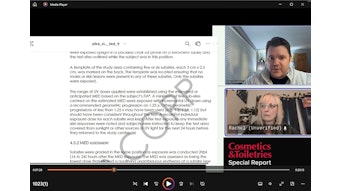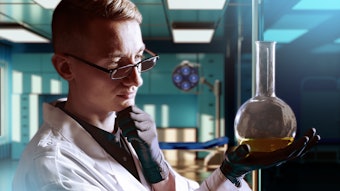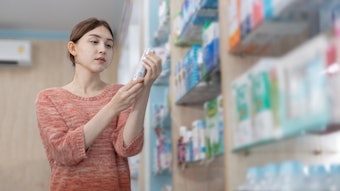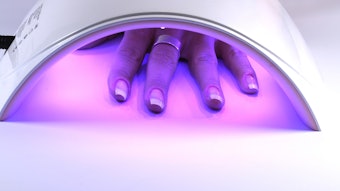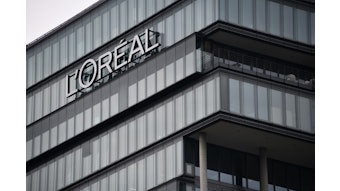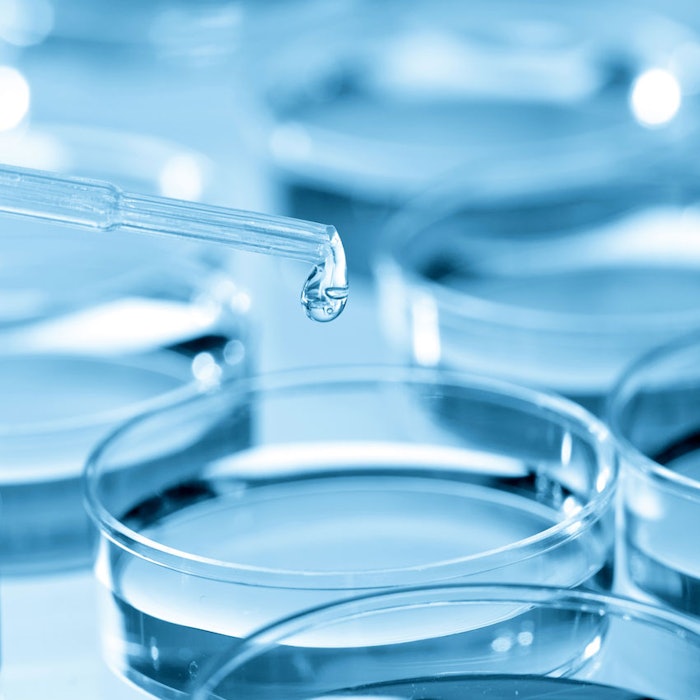
Editor’s note: This article is the eighth in a series covering the EU requirements for cosmetic products; see the previous: Part I, Part II, Part III, Part IV, Part V, Part VI and Part VII.
Update: Per our advisor's feedback on this article, the EU also accepts products with a water activity at 0.6 or less as not needing a preservative efficacy tets.
The European Commission's (EC) Cosmetics Regulation No. 1223/2009 is the main regulatory framework for finished products placed on the European Union (EU) market.1 Cosmetic products must be safe for human health, thus the regulation requires a cosmetic product safety report (CPSR).
The regulation also lists, in Annex I, the minimum data to be provided, including a section on microbiological quality. Its aim is to determine the acceptable specifications of ingredients and finished products from a microbiological point of view.2 These specifications must be part of the safety assessment.
Preservative Purpose
The reasons for ensuring microbial preservation in cosmetics are:3
- To ensure microbial safety for the consumer;
- To maintain the intended product quality and specifications; and
- To confirm hygienic and high-quality handling.
Particular attention must be paid for cosmetics intended to be used on sensitive body parts, e.g., around the eyes, on mucous membranes or on damaged skin; and in specific populations, e.g., children under three years, elderly individuals and those having compromised immune responses.
In addition, this information is essential to determine the effectiveness of the preservation system and justify the shelf-life and period after opening indication for the product in terms of safety; stability will be discussed in more detail in the next column. ISO standards on cosmetic microbiology have been established and guidelines for their application were recently published.4
Microbe Control in Ingredients
The main parameter to assess microbe control in ingredients is the original level of contamination and potential for microbial growth. Thus, particular attention should be paid to ingredients that are most susceptible to microbial growth; such as water-based mixtures, protein-rich materials and plant or animal ingredients.
Microbe Control in Finished Products
Regarding the microbiological risk of finished cosmetic products, there are three main categories to consider.
- Cosmetics with low microbiological risk, e.g., products with alcohol content > 20% and high/low-pH products; for these, neither microbiology quality tests nor a preservation challenge test are necessary per guidelines in ISO 29621:2010.5
- Single-use cosmetics and products that cannot be opened, e.g., sprays: For these, only microbiology quality tests are necessary.
- For all other cosmetics, microbiological quality tests and a preservation challenge test are necessary.
Microbiological Limits
The assessment for microbiological quality in cosmetics is described in the international standard ISO 17516:2014.6 It distinguishes two groups of cosmetics as having specific microbiological limits.
Category 1 includes cosmetics specifically intended for children under the years, to be used in the eye area and on mucous membranes. Here, the total microbial count must me ≤ 100 cfu/g or mL. Also, the absence of E. coli, P. aeruginosa, S. aureus and C. albicans in 1 g or mL must be ensured.
Category 2 includes all other cosmetics. Here, the total microbial count must be ≤ 1,000 cfu/g or mL, and the absence of E. coli, P. aeruginosa, S. aureus and C. albicans in 1 g or mL must be ensured.
Preservation Challenge Test
The preservative challenge test, or preservative efficacy test (PET), involves artificially contaminating the finished product then evaluating the decrease in contamination to levels ensuring the microbiological limits established for Categories 1 and 2, decribed above.
The preservation system should cover a large spectrum, including Gram-positive and Gram-negative bacteria, yeasts and molds. Several testing protocols can be used. In Europe, the internationally recognized ISO 11930:2012 is most commonly used.7
Prior to initiating the protocol, a total microbial count is performed to assess the initial microbiological quality of the product; if good, the PET can be performed. The protocol uses five strains: S. aureus, E. coli, P. aeruginosa, C. albicans and A. brasiliensis, and the microbial densities are monitored over a 28 day-period. Results are compared to acceptance criteria, and products are assigned as follows:
- Criteria A: the cosmetic product is protected against potential microbial contamination
- Criteria B: the level of protection is acceptable if the microbiological risk analysis demonstrates the existence of control factors not related to the formulation
- Neither criteria A or B: The product will be further evaluated on the basis of microbiological hazards and will possibly need a reformulation to provide better antimicrobial protection.
The result of the challenge test should be good in order to proceed further and perform the stability study, which will be covered next month in Part 9 of this series. A challenge test also should be performed at the end of the stability study to verify the preservative system is still effective.
The microbiological quality of cosmetics is a critical element for the safety assessment. This aspect should be assessed as soon as possible after validation of the formulation before proceeding further.
References
1. https://eur-lex.europa.eu/legal-content/EN/TXT/HTML/?uri=CELEX:02009R1223-20150416&from=EN
2. https://eur-lex.europa.eu/legal-content/EN/TXT/?uri=CELEX%3A32013D0674
4. ISO/TR 19838:2016 Microbiology: Cosmetics, Guidelines for the application of ISO standards on Cosmetic Microbiology
5. ISO 29621:2010: Cosmetics: Microbiology, Guidelines for the risk assessment and identification of microbiologically low-risk product
6. ISO 17516:2014 Cosmetics: Microbiology, Microbiological limits
7. ISO 11930:2012 Cosmetics: Microbiology, Evaluation of antimicrobial protection of a cosmetic product
Additional Resources
European Commission web site: https://single-market-economy.ec.europa.eu/sectors/cosmetics/legislation_en


